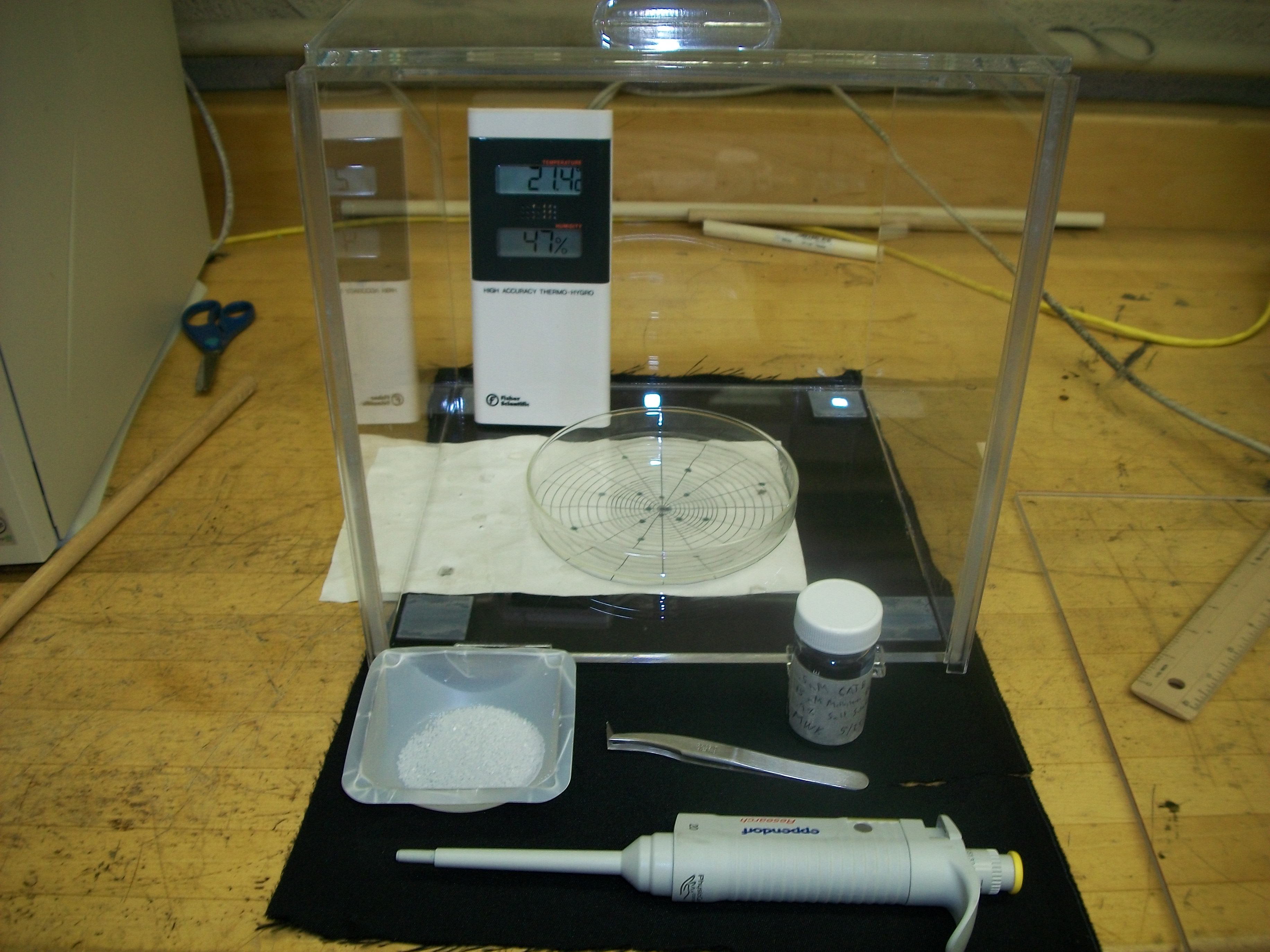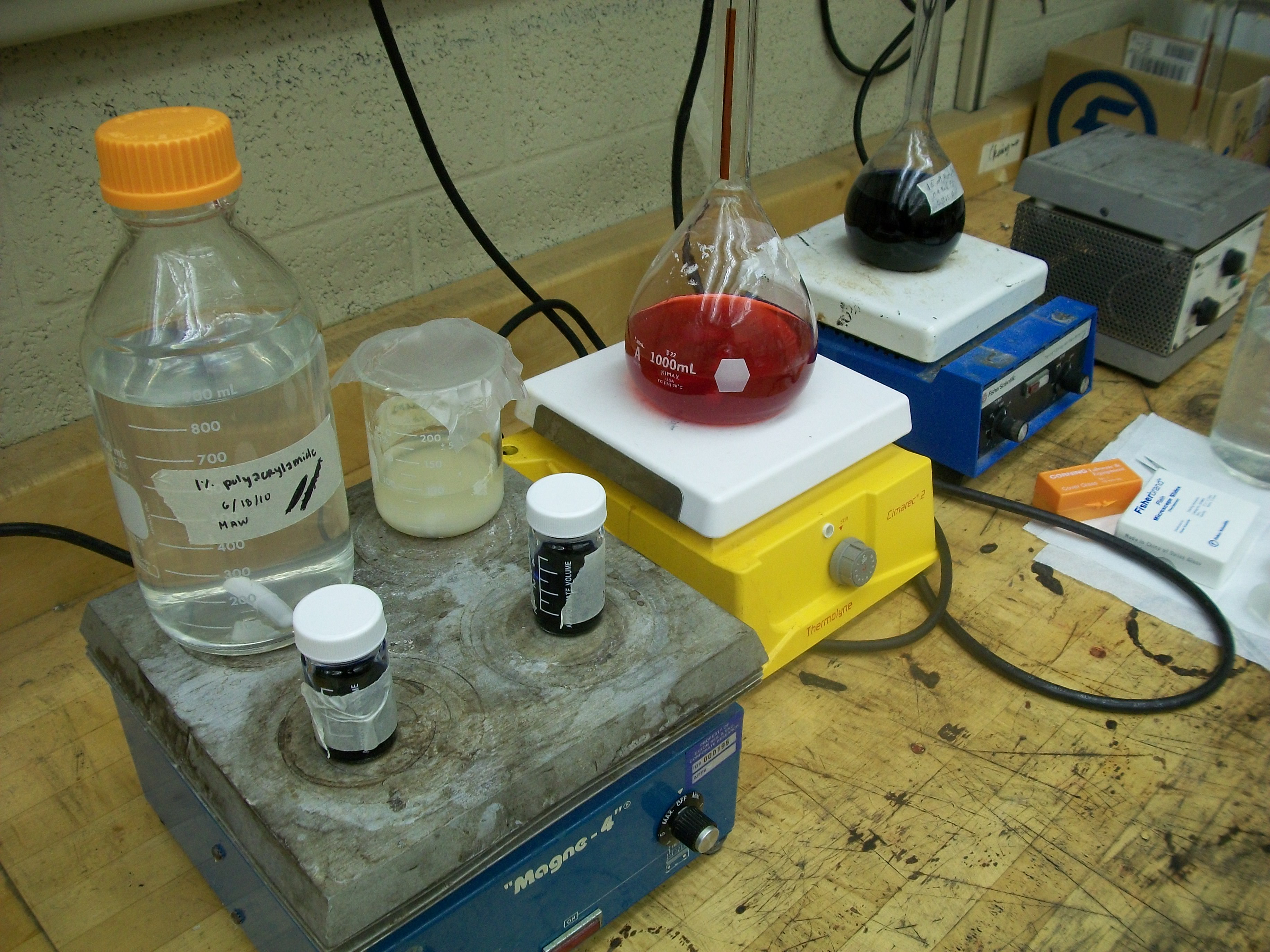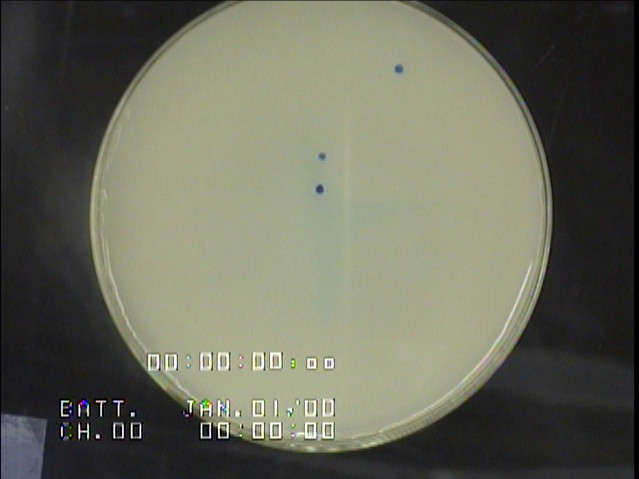Marangoni Flow for Drug Delivery
Carnegie Mellon University Summer 2010Cystic Fibrosis is a genetic disease that largely affects the lungs, resulting in increased mucus build-up and inflammation. Antibiotics are given to treat symptoms, but it can be difficult to administer a drug to the lungs through inhalation due to obstructions. A surfactant based drug delivery solution was explored in this research project.
Surfactant molecules have a hydrophobic tail and a hydrophillic tail. When added to a solution, the surfactants assemble at the surface and interrupt surface tension between existing molecules, causing a surface tension gradient. This gradient creates a spreading force, known as Marangoni Flow, which was investigated as a potential drug delivery mechanism. Specifically, the goal was to model the effect of humidity and temperature on the spreading distance and to determine the surfactant dispersion compared to the associated drug dispersion.
I designed two experiments. The first experiment used a polyacrylamide subphase (a clear, viscous liquid) in a petri dish with polystyrene particles place at various angles and distances from the center. After depositing a surfactant solution at the center of the petri dish, the resulting movement of the polystyrene particles would indicate the Marangoni Flow spreading distance. This test was done in different humidity and temperature environments. I used a camera system and image analysis script to analyze the outward motion of the particles.
The second experiment used a mucin subphase in a petri dish with dye droplets deposited at various angles and distances from the center. Then a surfactant solution with a different colored dye (representing the drug particles) was deposited in the center of the petri dish. The surfactant spreading distance was determined to be the furthest a non-centered dye droplet was distorted, and the "drug" spreading distance is the furthest the centered dye droplet spread.
This research was performed at the Interfacial Physics Group at Carnegie Mellon University under Dr. Stephen Garoff. My activities involved synthesis of various subphases (synthetic pig mucus and polyacrylamide), construction of a controlled temperature and humidity chamber for testing, developing a script for tracking the spreading distances of polystyrene tracer particles, and running numerous spreading trials to identify repeatable results.
Recognition


